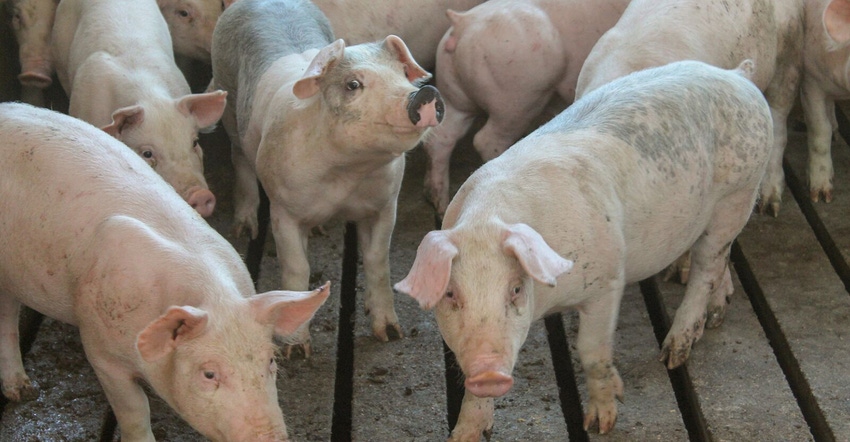Report of emerging swine flu strain lacks context
U.S. swine industry routinely monitors circulating influenza viruses and has not found evidence of new G4 strain in U.S. pigs.

A report of a new influenza strain — designated G4 EA H1N1 — emerging in swine slaughterhouses in China, while having scientific rigor, lacks context in its conclusions, according to Dr. Paul Sundberg, executive director of the Swine Health Information Center.
In the report, published in Proceedings of the National Academies of Science (PNAS), researchers from China noted that the G4 viruses "have all the essential hallmarks of a candidate pandemic virus," adding that there was "concern" that swine workers showed elevated seroprevalence of the G4 strain.
Sundberg discussed the report with Feedstuffs and National Hog Farmer after meeting with a group of influenza experts from federal agencies, universities, industry groups and producers.
He said the group agreed that the research was done well, they identified the virus and studied the strain in ferrets and in pigs — all of which were appropriate for studying influenza viruses.
However, he said the group had an issue with the imminent risk of the "pandemic potential" of the G4 strain.
Sundberg said in the current climate surrounding the COVID-19 pandemic, it is easy to get "reactionary" about a report that describes a "new" virus. The virus is out there and has been reported on, but there is "nothing in the report to say the risk is more now" with the G4 strain "or that this strain is more of a risk than other strains."
The newly published PNAS report analyzed data from 2016 to 2018, so the G4 genotype is not new, and the report is about a virus the researchers studied years ago as a surveillance/monitoring activity in packing plants.
Sundberg noted that the report did not indicate if the seroprevalence noted in the workers indicated illness or if there was human-to-human transmission during the study period. A small percentage of people tested were seropositive, but the report doesn't indicate how those people got the virus, if they spread it or anything about their illness, Sundberg said.
Further, Sundberg noted that in China, swine influenza is less commonly identified as a clinical disease in the swine population than it is in the U.S. swine industry.
He noted that there are a lot of influenza strains out there, and in fact, the U.S. Department of Agriculture has been cooperating on swine influenza surveillance with the U.S. Centers for Disease Control & Prevention since 2008 and has found no indication of the G4 strain in the U.S. swine population.
Sundberg pointed out that another aspect the swine influenza experts brought up was that China's equivalent to CDC has been aware of the G4 genotype long enough that it has a human vaccine candidate for this strain under development.
As noted in the report abstract, pigs are considered an important host for influenza viruses, along with avian species and people. Avian influenza viruses are known to infect swine and "mix" with mammalian viruses that can be transmitted to people, and vice versa. Therefore, systematic surveillance of influenza viruses in swine, as well as poultry, is essential for early warning and preparedness for influenza outbreaks in human populations, the PNAS report said.
About the Author(s)
You May Also Like



